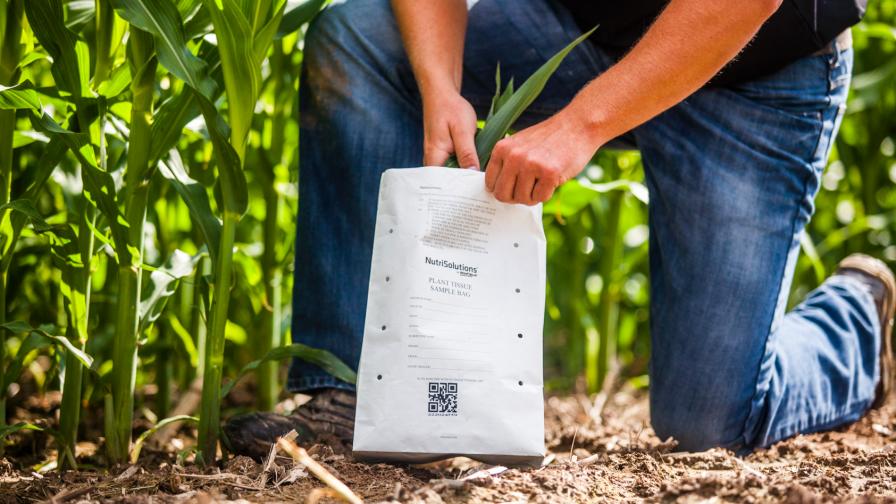Tissue Sampling Reveals 5 Key Plant Health Trends
Tissue sampling analysis done by WinField United in 2019 revealed that challenging environmental conditions may have led to nutrient deficiencies in crops. Farmers submitted over 45,000 tissue samples this year, and the data shows nutrient availability may have been limited by stresses crops faced in-season.
Nutrient Trends and Insights
Here are some nationwide trends revealed by tissue analysis conducted by WinField United in 2019.
- Corn lacked sufficient macro- and micronutrients. Corn yields may have been limited by nutritional deficiencies based on over 21,000 tissue samples submitted from across the country. The most common deficiency was zinc; over 80% of corn sampled was short on the nutrient that aids in chlorophyll synthesis and other metabolic functions. Boron, manganese, nitrogen and sulfur were also deficient or responsive in a majority of the samples analyzed.
- Soybeans were potassium deficient. Nearly 75% of soybeans sampled lacked sufficient potassium levels to meet plant health needs. Potassium is important for nodule formation and nitrogen fixation in soybeans. A majority of soybeans were also low in copper and sulfur based on analysis of over 5,200 soybean tissue samples taken nationally.
- Wheat needed micronutrients. Similar to last year, chloride deficiency was widespread across wheat crops in 2019. Over 87% of wheat sampled lacked adequate concentrations of the nutrient. Limited availability of chloride can disrupt plant metabolism, including water regulation in cells and plant enzyme activation. Magnesium, copper, boron and zinc were also limited in more than 75% of the wheat samples analyzed.
- Cotton was deficient in potassium. Nearly 95% of cotton samples were deficient or responsive in potassium for 2019, up from nearly 90% in 2018. Potassium is an essential nutrient that is important for fiber development in cotton. Calcium, boron, copper and zinc were also lacking in the majority of the over 1,500 cotton samples submitted.
- Alfalfa was short on calcium. Like we saw last year, over 90% of the more than 300 alfalfa samples analyzed had low levels of calcium in 2019. Calcium aids in nitrogen uptake and nutrient absorption, and it contributes to enzyme activity in plants. The majority of alfalfa samples were also short on magnesium, phosphorus, potassium and copper.
Sampling Helped Identify Nutrient Ratio Imbalances
The WinField United sampling database includes more than 600,000 data points that help identify nutrient trends based on geography, soil type and environmental conditions. Using the analysis from samples taken in 2019, farmers can identify how nutrient deficiencies and unbalanced nutrient ratios may have impacted their yield potential. Those insights can help inform fertilization strategies for 2020. Supplementing soil nutrients will be incredibly important to overcome some of the nutritional challenges crops faced in 2019.
While nationwide trends in crop health were analyzed and reported, individual field testing is the best way to evaluate nutrient deficiencies. Tissue sampling, combined with soil sampling, can help farmers assess crop nutrient availability to fine-tune fertilization applications.
To evaluate crop health and develop customized fertility programs, contact a locally owned and operated WinField United retailer.






